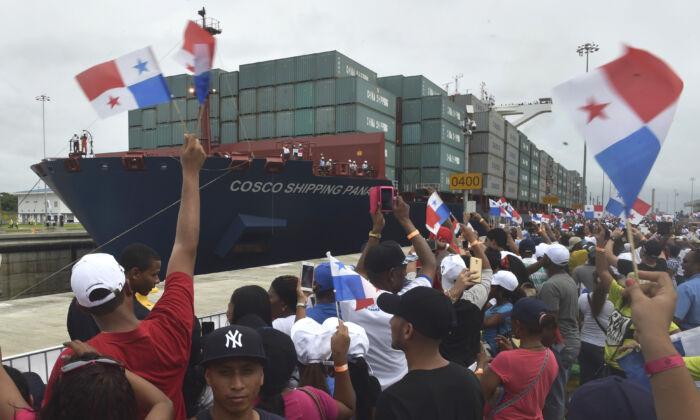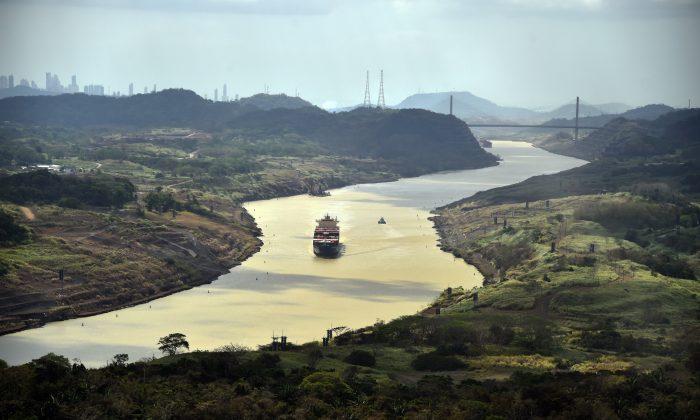Tensions between China and the Trump administration are not only evident in an escalating trade war. The standoff also appears to be intensifying in Central America and the Caribbean, creating a new wrinkle in an already volatile relationship.
At a moment of acutely strained relations with China, the United States sent strongly worded messages of discontent to three Central American nations. All have recently normalized their own relations with China.
On the anniversary of the Torrijos-Carter Panama Canal Treaty—Sept. 7, 2018—the U.S. State Department recalled Roxanne Cabral, U.S. charge d’affaires in Panama. U.S. ambassadors to the Dominican Republic and El Salvador—Robin Bernstein and Jean Manes, respectively—also were recalled for consultation in Washington.
Each diplomat represents the United States in a country that has recently switched its diplomatic relations from Taiwan to China within the last year.
According to the State Department’s press release, the three diplomats were scheduled to “meet with U.S. government leaders to discuss ways in which the United States can support strong, independent, democratic institutions and economies throughout Central America and the Caribbean.” The tone implies concerns that Chinese largess may be undermining institutional stability in these countries.
China Dominates Diplomatic Arm Wrestle
One area of concern for the Trump administration is the pace at which more countries are breaking off diplomatic ties with Taiwan and normalizing relations with China. Beijing refuses to maintain diplomatic ties with countries that recognize Taiwan, a self-ruling island of 23 million off the mainland’s southeastern coast. Beijing views Taiwan as a renegade province.Taiwan has had longstanding diplomatic and economic ties in Latin America, but the trend is now shifting in favor of Beijing. El Salvador cut ties with Taiwan in August, the Dominican Republic in May, and Panama last summer. With the recent changes, Taiwan’s formal diplomatic allies stand at just 17.
While Washington switched its formal diplomatic ties from Taipei to Beijing in 1979 and adheres to the one-China policy, it maintains a de facto embassy in Taiwan called the American Institute. More critically, the United States sustains a strategic alliance with Taiwan, including the sale of arms to the self-governed island and a pledge to protect it in the event of a military conflict. For years, Taiwan was a crucial element in a U.S.-led cordon sanitaire around China.
Panama Canal Under Threat
The United States is increasingly concerned that the Panamanian government has already made extensive concessions to Chinese interests along the Canal Zone. An estimated 43 percent of the zone’s activities are under Chinese control.The Trump administration is also uneasy about many joint Chinese-Panamanian accords in finance, economic cooperation, railways, and industries. The Panamanian president is closing many of these deals without consulting with the country’s legislature. The lack of scrutiny and democratic due process also worry some Panamanian business and political forces.
Critics of these accords in Panama believe that the growing indebtedness to China will lead to Chinese interests building a fourth set of locks in the canal. Euclides Tapia, a Panamanian international-relations professor and former government official, argues that “they are already conducting a feasibility study without anyone’s approval. In other words, they’ll indebt us up to our necks, and that canal won’t be Panama’s until it pays what it owes.”
The Modus Operandi
China’s practice of leveraging billions of dollars in debt to obtain critical assets, economic dominance, and political influence in Asia has alarmed a growing chorus of critics in the Americas as well.A recent Harvard study detected a trend of countries with debts too large to pay back, which allow Beijing to “acquire strategic assets or political influence over debtor nations.” Major infrastructure facilities built with Chinese loans are increasingly leased for periods of 99 years to help repay debts. These facilities have multi-use purposes that range from commercial to logistical and possibly even military.
The stakes in the Panama Canal are high. The major U.S. anxiety is control of access to transoceanic shipping, a longstanding strategic geopolitical interest. The slightest threat that an adversarial power could control it is untenable for U.S. national-security interests. The prospect of a canal with a military base from an adversarial nation in the western hemisphere has the potential to unleash a geopolitical crisis.
China’s intentions to build a canal through Nicaragua have now been routed. Financial and other considerations have all but ended the possibility of such a canal owned and controlled by the Chinese. Even though China has long had other projects, such as state-of-the-art rail lines and other transport infrastructure to help its transoceanic trade, a transoceanic canal remains a priority.
As China works to achieve its aims in the Americas, tensions with the United States are likely to escalate. Volatile trade measures and a host of other conflicts have aggravated a deteriorating relationship. This latest exchange of diplomatic announcements and warnings suggest a renewed U.S. interest in the region and a possible tilt in the center of gravity away from the United States and toward China.
Fernando Menendez is a writer and analyst of China-Latin America relations based in Washington.
Views expressed in this article are opinions of the author and do not necessarily reflect the views of The Epoch Times.



Friends Read Free